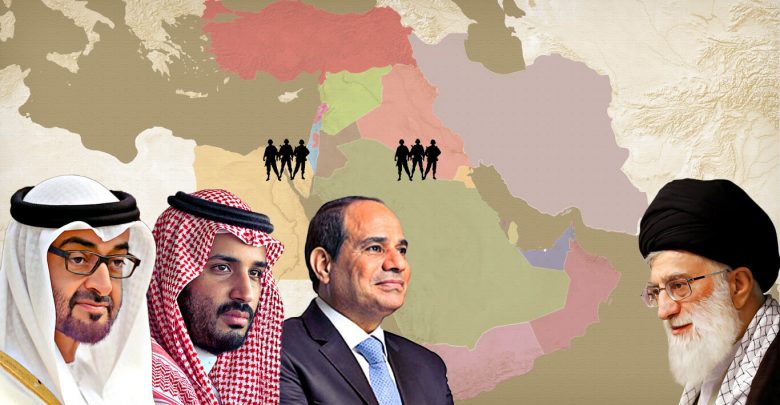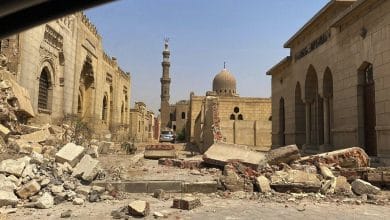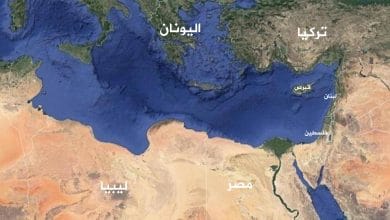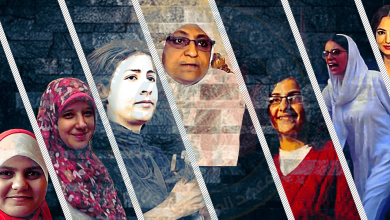
Likely Arab NATO Amid Recent Exercises in Egypt
Introduction
The idea of formation of Arab military alliances is not new, but it dates back to 1950 AD, when several Arab military alliances were formed, including alliances aimed at achieving strategic objectives, and those targeting fulfillment of tactical objectives, such as:
– On 17 June 1950, the Arab League announced that the “Treaty of Joint Defense and Economic Cooperation Between the States of the Arab League” was approved by the governments of Egypt, Jordan, Iraq, Lebanon, Yemen, Syria and Saudi Arabia.
– In early 1951s, the United Kingdom and the United States attempted to establish a military alliance under the name of “Middle East Command”, which was scheduled to include: Egypt, Jordan, Iraq and Saudi Arabia, as well as major powers such as the United States, Britain and France. However, the alliance failed in the end because of differences over the role and size of representation of member-states and due to insistence of major powers to include Israel in this bloc.
– The 6 October War in 1973 remains an example of non-official Arab coalitions. Although Egypt and Syria were in the lead, some other Arab countries supported them by providing little military contributions that did not reach the level of being a kind of military alliance.
– Added to this, The Peninsula Shield Force, a joint military force formed by the Gulf Cooperation Council, was established in 1982 and intended to protect the security of GCC member states and deter any military aggression against them, including: Bahrain, Kuwait, Oman, Saudi Arabia, Qatar, and the United Arab Emirates.
– In the wake of the Gulf crisis in 1991, which resulted in the invasion of Kuwaiti territory by Iraqi forces, a temporary alliance was formed to remove the Iraqi troops from Kuwait, which was at that time called: “Liberation of Kuwait War” or “Operation Desert Storm”, where most Arab countries except Jordan joined that alliance; and US forces used Saudi Arabia as the headquarters of operations.
Most of these alliances did not achieve their strategic objectives, because of the participating countries’ differences on their shares of control and power. Also, the alliances formed for specific tactical purposes have achieved relative successes, such as the cooperation between some Arab countries and Egypt in the 6 October War or the coalition formed to respond to the Iraqi invasion of Kuwaiti territory.
Over the past five years, there have been attempts to establish joint Arab military alliances in the region for achieving certain objectives, most notably the so-called “Arab NATO” that the United States is currently trying to establish in the region.
What are the dimensions of objectives and future paths of this idea?
Military Alliances after the Arab Spring
Since the outbreak of the Arab Spring revolutions, the idea of establishing a regional security structure to confront any security threats facing regimes in the Middle East region, has been pursued by Arab leaders; and several attempts to establish one have emerged since 2013, as follows:
1- Gulf NATO:
Late December 2013, the Gulf Cooperation Countries’ Supreme Council decreed the formation of a joint defense project (a US-backed Joint Military Command) of the GCC states as well as Jordan and Morocco under Saudi command, represented by Prince Miteb bin Abdallah, commander of the Saudi National Guard at that time. But the proposed coalition faced a series of obstacles that ultimately led to its failure, starting with the political differences within the GCC – both on the attitude towards the Muslim Brotherhood movement that Qatar does not see as a threat while the UAE and Saudi Arabia consider it a threat to their regimes, or the position on Iran, which Saudi Arabia and the UAE see as a threat while the rest of members of the proposed alliance, especially the Sultanate of Oman – through the different positions on the Syrian regime and the Syrian factions, up to Jordan and Morocco’s hesitation in supporting the military ambitions of Riyadh despite their apparent alignment with the latter. In addition, there were operational complexities associated with variability of military equipment, differences of doctrines, and lack of interoperable communications systems.
2- Arab Alliance to Lead “Operation Decisive Storm”:
This is the name used by Saudi Arabia in the first period of the military intervention that it led in Yemen (between 25 March and 21 April 2015) in reference to the alliance’s military activity in Yemen, against the Houthis and the forces of Ali Abdullah Saleh. This alliance included ten countries, namely, Saudi Arabia, Bahrain, Kuwait, Qatar, United Arab Emirates, Egypt, Jordan, Morocco, Sudan and Pakistan. Then, Saudi Arabia codenamed the operation after April 21, 2015 as Operation Restoring Hope.
This alliance was formed mainly to confront the Houthis, control the situation, and enable the legitimate government of President Abed Rabbo Mansour Hadi to control the Yemeni territory, which has been dominated by Houthis. However, the alliance failed to achieve its objectives, where the Houthis still control most of the Yemeni territory including the Yemeni capital of Sanaa.
It is worth mentioning that Saudi Arabia was counting in the beginning on the Egyptian role, especially in the ground intervention. In a televised interview on al-Arabiya Saudi TV Channel mid-April 2017, Brig. General Ahmed Asiri, Saudi Defense Minister’s adviser and spokesman for the Saudi-led coalition, said al-Sisi had previously offered to send 40,000 soldiers to Yemen for protecting the Saudi-Yemeni border. Asiri said, “Abdel Fattah al-Sisi offered the Saudi government and the coalition to send ground troops to Yemen but the coalition policy in Yemen does not allow the presence of any foreign ground troops on the Yemeni territory,” adding: “The Egyptian army currently cooperates in the naval and air efforts, but what we are talking about had happened earlier (at the beginning of operations) where almost 30,000 to 40,000 Egyptian soldiers participated as infant troops.”
However, withdrawal of Egyptian army at the time from sending soldiers to Yemen strained the relations between Egypt and Saudi Arabia, prompting Saudi Arabia to punish the Egyptian regime economically by stopping the oil supplies to Egypt in 2016. The Egyptian army’s abstention from sending infant troops for participation in operations in Yemen had a negative impact on the performance of the coalition in achieving its desired goals. In order for Saudi Arabia to tackle the situation, it resorted to the Pakistani army which later limited its participation in the alliance to only air and sea operations only, prompting Saudi Arabia to resort to Sudan, which sent its troops to the Yemeni interior to participate in the battles between the coalition forces and the Houthis; but this cost the Sudanese forces major losses and casualties. Because of this, there are escalating calls in Sudan for withdrawing troops from inside Yemen to save their lives. It should also be mentioned that Saudi Arabia and the UAE have used Blackwater to support the Yemeni army forces of the Hadi government as well as the Sudanese forces, according to a study by the “Begin-Sadat Center for Strategic Studies”.
3- Joint Arab Force:
During the 26th. Arab Summit held in Sharm El-Sheikh, Egypt in April 2015, Arab leaders agreed to form a joint military force. “The Arab leaders decided to agree on the principle of a joint Arab military force,” Abdel Fattah al-Sisi said in a speech at the gathering in the Egyptian resort town of Sharm el-Sheikh.
The decision was mostly aimed at fighting militants who have overrun swathes of Iraq and Syria and won a foothold in Libya, Arab League chief at the time Nabil al-Arabi said ahead of the summit.
However, the planned force – according to Foreign Policy magazine was supposed to include 40,000 elite soldiers from Egypt, Jordan, Morocco, Saudi Arabia, Sudan and the Gulf states, including an air force of 1,000 people, 5,000 navy personnel, and 35 thousand of infant troops, provided that Cairo provides most of the fighters, and Riyadh cover expenses, and to be headquartered in Cairo under the leadership of Saudi Arabia or alternating the leadership between Cairo and Riyadh. However, the proposed Arab force failed like previous attempts, because of disagreements over the leadership between Cairo and Riyadh on the one hand, and because of the controversy over the purpose of the establishment of the force on the other, and thirdly because of logistical constraints.
4- The Islamic Alliance:
The Islamic Alliance was formed on 15 December 2015 including 41 countries: Algeria, Bahrain, Bangladesh, Benin, Burkina Faso, Chad, Egypt, Jordan, Mali, Mauritania, Morocco, Oman, Pakistan, Qatar, Saudi Arabia, Senegal, Sierra Leone, Somalia, Somalia, the Sudan, Niger, Nigeria and Yemen. Saudi Crown Prince Mohammed bin Salman said the alliance’s goal was to coordinate efforts against extremists in Iraq, Syria, Libya, Egypt and Afghanistan.
The alliance declaration states that member-states are allied in four areas to coordinate their counterterrorism efforts:
a- The intellectual domain: It aims to preserve the universality of the message of Islam, with emphasis on Islamic principles and values, countering approaches of terrorist thought, and bringing about an intellectual, psychological and social impact necessary for correcting extremist terrorist concepts.
b- The Media domain: It aims to contribute to the development, production and dissemination of factual and scientific editorial content for use in communication platforms and media channels in order to expose and defeat the media propaganda of extremist groups.
c- Combating terrorism financing: It aims to cut off the financing of terrorism and dry up its sources. At the same time, sufficient resources will be provided to fight terrorism. The alliance will also coordinate with international bodies to track down financiers of terrorism and support initiatives that fight terrorism.
d- The military sphere: It will work to support military operational coordination among member-states for countering terrorism, as well as providing necessary training and qualification for the special units engaged in the fight against terrorism and deterring terrorist organizations through the military coordination of the alliance countries.
The alliance is now led by Pakistani former chief of Army Staff, General Raheel Sharif, and its main headquarters is located in the Saudi capital of Riyadh. However, since the inception of the alliance, it has not played any significant role or achieved any of its objectives. Only from time to time, leaders of member-states meet to discuss developments in the region. The ineffectiveness of the alliance in fact goes back to the conflict between Riyadh and Cairo on leadership, which ultimately forced Riyadh to bring a Pakistani commander to be at the head of the alliance. Some observers say this was behind reducing Cairo’s representation in the alliance’s annual meetings in Riyadh. While the Egyptian delegation that participated in the first meeting in March 2016 was headed by former Chief of Staff Lt. General Mahmoud Hegazi, the Egyptian delegation that participated in the November 2017 meeting was headed by the former Chief of Operations and Assistant Minister of Defense Tawheed Tawfiq – following the appointment of Sharif as commander of the alliance forces.
Arab NATO: Emergence of the idea
Egypt hosted the joint training activities codenamed “Arab Shield -1”, where military units from Egypt and five other Arab nations conducted war drills with live ammunition in the Egyptian desert west around the ‘Mohammed Naguib’ military base near the coastal Mediterranean city of Marsa Matrouh from 3 to 16 November 2018. The ‘Arab Shield-1’ drills together ground, naval and air units from Egypt, the United Arab Emirates, Saudi Arabia, Bahrain, Jordan and Kuwait. Cairo has been holding separate drills with each of the five Arab nations in recent years, but ‘Arab Shield’ marked the first time that all six allies simultaneously participated in war games.
“Egypt hosts Arab military exercises in what could develop into a regional pact or an ‘Arab NATO’ to counter Iran’s influence,” Reuters said in a report, adding that the US “President Donald Trump’s administration has been quietly pushing for Gulf Arab countries, together with Egypt and Jordan, to start putting together what some White House officials have called an “Arab NATO” of Sunni Muslim allies to stand against Shi’ite power Iran,” and confront armed groups that adopt jihadist thought in general.
In September 2018, Deputy Assistant Secretary of State for Arabian Gulf Affairs Tim Lenderking engaged in shuttle diplomacy to lay the groundwork for a U.S.-hosted summit in January on what officials are calling the “Middle East Strategic Alliance,” or MESA, an Arab version of NATO. The alliance includes the United States and the GCC member states (Saudi Arabia, the United Arab Emirates, Kuwait, Bahrain, Qatar and Oman), as well as Egypt and Jordan, Lenderking said in an interview with The National, a UAE newspaper. “This stems from the Riyadh summit in 2017 where everyone agreed that the US and the GCC would meet on an annual basis…we added on top of that the keen interest on both sides in building MESA,” Lenderking was quoted by The National as saying. The alliance would have a basis in security, economic and political areas, he said.
Those efforts appeared to pay off late last week, when Secretary of State Mike Pompeo gathered on the sidelines of the U.N. General Assembly in New York City with the foreign ministers of Bahrain, Egypt, Jordan, Kuwait, Oman, Qatar, Saudi Arabia, and the United Arab Emirates to prepare for the January meeting, State Department sources confirmed. U.S. officials called Mr. Pompeo’s Gulf Cooperation Council “GCC+2 Ministerial” meeting “productive” with State Department spokeswoman Heather Nauert adding that last Friday’s talks focused “on establishing a MESA, anchored by a united GCC, to advance prosperity, security, and stability in the region.”
Lenderking said MESA would be a “strong shield against threats in the Gulf” including Iran, cyber attacks and conflict management in Syria and Yemen. However, he cautioned that talks were still in the early stages and the timeline could change. The formation of the alliance is complicated by a regional rift that has seen Saudi Arabia, Bahrain, the UAE and Egypt close diplomatic, trade and transport links with Qatar since June 2017 over its alleged support of terrorist groups.
Obstacles and possibilities
Despite the fact that the developments in the Middle East are not appropriate for the formation of such an alliance, especially in light of the Gulf crisis of the siege imposed on Qatar by Saudi Arabia, UAE, Egypt and Bahrain, and the implications of the assassination of Saudi journalist Jamal Khashoggi. Added to this, the GCC countries have different relations with Iran, according to The Washington Times. While Saudi Arabia and the UAE take a hard line on Tehran, Kuwait wants to maintain good relations with it; and Oman is already maintaining excellent relations with the Iranian regime. Even some emirates within the UAE maintain strong economic and trade ties with Iran; and the crisis that Saudi Arabia and the UAE have waged against Qatar has pushed the latter to rapprochement with Iran and Turkey. “But before the Arab NATO can function effectively, the members must resolve a major diplomatic divide, The Washington Times said.
Turkey also sees in MESA a security threat, against the backdrop of the role that could play in supporting the Kurdish presence in northern Syria, which represents a strategic threat to Ankara. Under the current alliance between Turkey and Qatar, it is hard to imagine that Qatar will enter an alliance that Turkey will not accept at the moment, nor will America support such an alliance if Turkey explicitly opposes it. Israel is also against formation of any alliances in the region; but if that alliance is under the US umbrella, Israel may agree to it provided that it will take into account Israeli interests.
Conclusion
The success of an Arab NATO, despite all the challenges it faces, either from within its member-states, or due to regional developments, mostly relies on the United States, albeit temporarily, and the extent of influence it has and the pressure it practice on the alliance’s member-states.




